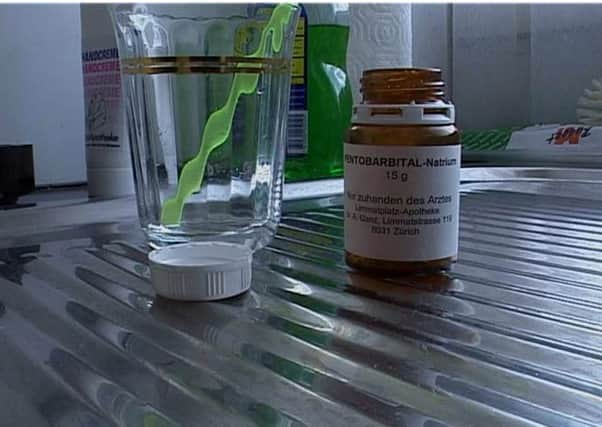Ben Lowry: The need to stay ever vigilant about the slippery slope on euthansia


The story said that a teenage girl in Holland, who had been severely depressed due to childhood sex assault, anorexia and mental illness, had been euthanised. Noa Pothoven was 17.
I retweeted the story, expressing horror that a state could facilitate the suicide of a girl.
Advertisement
Hide AdAdvertisement
Hide AdHowever, we were careful in our own report in this newspaper to say that the circumstances of her death had not been confirmed.
It was good to learn (insofar as there is anything good in such a tragic story) that the reports were wrong (some media outlets had not checked their story).
Noa had not been euthanised at a clinic in the Netherlands, where such controlled suicides are legal, albeit within strict limits.
Saying that her “suffering is unbearable,” she had applied for that lethal outcome previously, without her parents knowing, but was refused. She is instead reported to have died in a hospital bed in her home, after doctors and family declined to force feed her.
Advertisement
Hide AdAdvertisement
Hide AdIn reaction to the thought that a girl of this age had been put to death, with the assistance of a clinic and permission of the state, caused widespread revulsion among colleagues of mine and among users of Facebook and Twitter that I saw.
That snapshot of reactions suggests that there is still overwhelming opposition to the euthanising of a child in such circumstances, however severe her trauma.
But the opposition is not universal. One person tweeted me, asking “who was I to judge”?
The mis-reporting of this case has had the unintended consequence of flagging up a key debate.
Advertisement
Hide AdAdvertisement
Hide AdThe Dutch permit euthanasia from age of 12. While I trust this is almost never authorised, and if so only in situations where the child is terminally ill and in great pain, it is still hard to accept the concept that there can be situations in which actively hastening the death of someone so young is permissible.
While I do not have fixed views on euthanasia, I am concerned by the slippery slope argument.
When you think of the despicable ways people behave over money and wills, it is not hard to imagine some people – very few, but some – putting pressure on an older person to bring forward their death for financial gain, while deluding themselves that they are actually acting in the senior person’s interest.
At the other end of the spectrum, few people would be absolutist, and say suicide is never permissible to avoid an even worse fate.
Advertisement
Hide AdAdvertisement
Hide AdTo take the argument to extremes, who would say that someone stuck at the top of the Twin Towers on September 11 2001 would have been wrong to jump to their deaths rather than wait to be burned to death half an hour later?
But what if you kill yourself to avoid a painful death a day in the future? Or a week? A month? Year?
Necessarily there comes a point at which a moral position that we almost all accept ceases to have unanimous support, and there come points thereafter where support steadily decreases.
Personally I cannot see a situation in which it would be OK to euthanise someone for the reasons Noa wanted to die, and certainly not someone under the age of 21 or 25.
Advertisement
Hide AdAdvertisement
Hide AdI even have grave concerns over the decision not to force feed her.
A medical relative of mine who has seen many terminal patients once told me that they mostly want to live on to the last moment, even in the most dire situations.
Ultimately someone who is determined to die by suicide will do so, unless they are physically unable to move themselves, perhaps through paralysis or perhaps through imprisonment.
But suicide is the pre-eminent horror in a child. It is hard to think of anything worse, that someone who should be full of hope for the future no longer wants to live.
Advertisement
Hide AdAdvertisement
Hide AdWhile it might be hard to prevent, at least we should use every device we can to try to persuade those young people known to be suicidal to think things might improve, such as talking to people who almost ended their lives but are delighted they did not (as a Twitter user tweeted to me the other day).
Young people are particularly prone to ‘catastrophising’.
For me life has got steadily more agreeable as I have aged. I enjoyed my 20s more than my teens, my 30s more than my 20s and now prefer my 40s to my 30s. If someone had told me that life might follow that trend, I might have agonised less about various things when young.
This is not to compare flippantly such a casual observation with someone who feels on the edge of the abyss. I do not doubt that treating such people is fiendishly complex. I just hope that if euthansia does become a feature of all western countries, we stay ever vigilant about that slippery slope.
• Anyone in despair can call Lifeline on 0808 808 8000 24 hrs a day
• Ben Lowry (@BenLowry2) is News Letter deputy editor